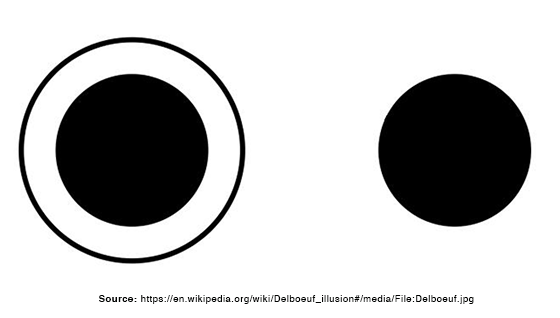Optical illusions are everywhere, going largely unnoticed in our daily lives. The "water puddles" on the road during hot afternoons. The moon appearing larger on the horizon and smaller overhead. The sensation that the car is moving during a drive-in car wash. And yes, not even the dental office is safe from the power of illusion.
One of the most complicated dental procedures performed on a daily basis is the root canal, or endodontic therapy. Despite advances in various aspects of the process, cutting open the tooth and filing out the infected tissue is still the most effective way to treat pulpitis while preserving the tooth structure. This preservation of as much healthy tooth as possible is the main goal of endodontic treatment. However, the miniscule size of the tooth's canals means that magnifying devices must be used, which isolate the tooth from visual points of reference. Noticing this constriction of reference, researchers at the University of Otago, New Zealand investigated the occurrence of the Delboeuf illusion in endodontic treatment.
The Delboeuf illusion occurs when two circles of the same size are compared, one surrounded by a larger border or ring, and the other bare. Based on the distance of the surrounding ring, the first circle may seem larger or smaller than the second.

The researchers investigated the impact of this illusion when removing infected pulp from the endodontic canal, and the effect on the final canal size. The illusion stems from the contrast of the enamel, dentin and canal borders creating concentric rings. In single-root teeth, these rings are often oblong, while the canal is round. The question the researchers posed is whether the size and shape of the cut canal is associated with a stronger or weaker Delboeuf illusion.
To investigate this, the researchers selected previously-extracted teeth that had straight roots, closed apices and no fractures. These teeth were then endodontically treated; the canals were cut to a consistent diameter, filled with gutta-percha, and mounted in a simulated bony crypt for apicectomy. Finally, to simulate the apicectomy, the apical 3 mm were removed using a 90 degree cut, and the resulting cross-section was photographed for later study. The endodontists were presented with the tooth and simulated bony crypt and instructed to prepare a cavity in the root end of each tooth, as if a filling were to be placed. The clinicians were instructed to be conservative in their removal of tooth material.
After "treatment" from the dentists, the teeth were photographed again in the same standardized rig. The degree of Delboeuf illusion was measured as a ratio of original canal size to dimensions of the tooth face. Before-and-after photographs of each tooth were measured along both axes of their oval cross section, and compared against the dimensions of the canal cut by the endodontists. Linear regression was used to establish a statistical basis for comparing the results.
The researchers found that as the degree of Delboeuf illusion increased (a greater difference between the size of the canal and size of the root face), so did the size of the cavities in the root end. Additionally, this correlation did not emerge when comparing cavity size to overall tooth size, confirming that the dentists were not simply "cutting bigger holes for bigger teeth." Interestingly, the cavities cut by the dentists were more oblong in shape where the tooth face was oblong, even though the canal was round.
The results show that dentists are susceptible to illusions of reference during endodontic procedures, which may lead to greater removal of material than desired. Endodontic therapy in general walks a fine line: leave too much material, and the infection may re-occur. Remove too much, and the tooth may be structurally compromised, leading to resorption or re-infection.
Illusions are everywhere, and it's impossible to avoid every one. The best way to prevent being influenced by illusion is to exercise careful measurement and come prepared with foreknowledge of the phenomenon.
Source:
O'Shea, R., Chandler, N., & Roy, R. (2013, October 23). Dentists Make Larger Holes in Teeth Than They Need to If the Teeth Present a Visual Illusion of Size. Retrieved January 18, 2016, from http://journals.plos.org/plosone/article?id=10.1371/journal.pone.0077343
The information contained in this, or any case study post in Incisor should never be considered a proper replacement for necessary training and/or education regarding adult oral conscious sedation. Regulations regarding sedation vary by state. This is an educational and informational piece. DOCS Education accepts no liability whatsoever for any damages resulting from any direct or indirect recipient's use of or failure to use any of the information contained herein. DOCS Education would be happy to answer any questions or concerns mailed to us at 106 Lenora Street, Seattle, WA 98121. Please print a copy of this posting and include it with your question or request.




